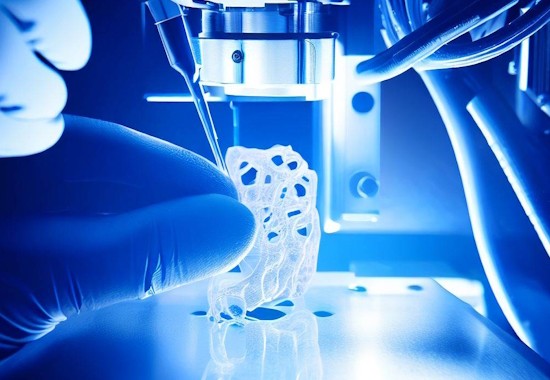History and Development of 3D Bioprinting
The earliest concepts and developments in 3D bioprinting date back to the late 1990s and early 2000s. Some of the pioneering work during this era includes the development of extrusion-based bioprinting technologies for depositing living cells and modeling the basic structure of biological tissues. In the following decade, research intensified as 3D bioprinting started gaining recognition within scientific and medical communities as a disruptive technology. By 2010, the field had matured significantly withadvancements in multi-material deposition capabilities, cell-friendly bioinks, and tissue modeling approaches.
Today, 3D bioprinting continues to rapidly evolve through collaborative efforts between researchers from fields like bioengineering, materials science, medicine and more. New advancements are enabling the fabrication of more complex living structures with diverse applications. Government funding is also fueling further innovation to realize the technology’s potential to revolutionize drug discovery, disease modeling and regenerative medicine.
Current Applications of 3D Bioprinting
While whole organ fabrication still remains on the frontier, 3D Bioprinting is already being applied across various areas. Some current important applications include:
Drug Testing & Personalized Medicine: 3D bioprinted tissue models are being used to test drug toxicity and efficacy in more realistic physiological environments compared to traditional 2D cell cultures. The ability to 3D print living structures personalized at a genetic level also opens up new possibilities for tailored drug development and regenerative therapies.
Skin Grafts & Burn Healing: Several biopharmaceutical companies have developed 3D bioprinted skin substitutes that are in various stages of clinical trials and real-world use. These living skin grafts can help treat burn wounds and other skin injuries or conditions more effectively compared to traditional skin grafts.
Bone & Cartilage Repair: Bioprinted bone and cartilage tissues are demonstrating potential to aid in mending fractures and injuries that otherwise take a long time to heal through the body’s natural processes. Implanting bioprinted constructs that can remodeling in vivo offers an innovative solution.
Disease Modeling: The capability to 3D print miniature functional replicas of human organs allows for more predictive preclinical studies of several human diseases. Researchers are 3D printing liver, heart and brain tissues for modeling various conditions like cancer, Alzheimer’s etc.
Future Possibilities with Advancing Technology
While 3D bioprinting is already contributing in the above key areas, its true transformative potential is still ahead as enabling technologies progress rapidly:
Whole Organ Bioprinting – Advances in multi-material deposition, larger scale bioprinters and development of vasculature-mimicking constructs are bringing us closer to the goal of 3D printing fully-functional human organs suitable for transplantations.
Immune-Evasive Implants – By coating bioprinted implants with cells from recipient patients or immune-inhibitory materials, it may be possible to circumvent rejection responses upon implantation.
Personalized Implants & Prosthetics – Patient-specific 3D anatomical models derived from medical scans can be leveraged for fabricating customized implants, prosthetics and wearable medical devices using living cells and tissues.
In Situ Bioprinting – The future may see miniature bioprinting systems capable of injecting living materials directly into the body through minimally invasive means to aid self-assembly of functional tissues at injury sites.
While overcoming current technical and biological hurdles, the culmination of ongoing advancements promises to radically transform many areas of healthcare through personalized living implants and engineered tissues 3D printed on demand. With continued multidisciplinary collaboration, 3D bioprinting’s full potential of democratizing regenerative medicine worldwide could be realized in the coming decades.
*Note:
1. Source: Coherent Market Insights, Public sources, Desk research
2. We have leveraged AI tools to mine information and compile it




